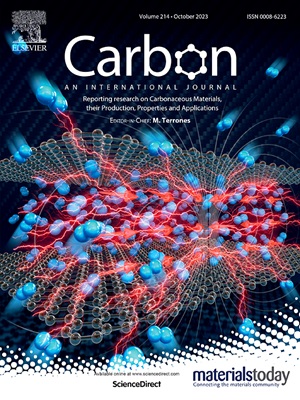Pre-twisted carbon fibers reinforced polymer composites and the unique clockwise and counterclockwise torsion behaviors
IF 10.5
2区 材料科学
Q1 CHEMISTRY, PHYSICAL
引用次数: 0
Abstract
Twisting can enhance the interaction forces between fibers in bundles, improving the mechanical properties of fiber-reinforced composites. This study employs the thermosetting method to fabricate pre-twisted carbon fiber-reinforced polymer (CFRP) composites. The effects of twist on resin impregnation were qualitatively and quantitatively investigated by measuring the contact angle and analyzing thermogravimetric data. The torsional strength and modulus of CFRP were measured using a customized torsion testing apparatus to study its torsional behavior. Additionally, finite element analysis was conducted to examine the mechanical characteristics of varying twist levels (0–300 T/m) under the combined effects of tension and torsion, elucidating the reinforcement mechanism of twisting in fiber-reinforced composites. The results indicate that pre-twisted CFRP exhibits distinctly different behavioral characteristics during anti- and clockwise torsion. The composite with 100 T/m twist exhibits the highest clockwise torsional strength (1608 MPa), which is twice that of untwisted CFRP; The 300 T/m CFRP achieves an anticlockwise torsional angle of 18,000° (three times that of untwisted CFRP) and exhibits unique stability over a broad range. The experimental results and theoretical models presented in this study offer valuable guidance for enhancing the mechanical properties of twisted carbon fiber composites under torsional loading conditions.

求助全文
约1分钟内获得全文
求助全文
来源期刊

Carbon
工程技术-材料科学:综合
CiteScore
20.80
自引率
7.30%
发文量
0
审稿时长
23 days
期刊介绍:
The journal Carbon is an international multidisciplinary forum for communicating scientific advances in the field of carbon materials. It reports new findings related to the formation, structure, properties, behaviors, and technological applications of carbons. Carbons are a broad class of ordered or disordered solid phases composed primarily of elemental carbon, including but not limited to carbon black, carbon fibers and filaments, carbon nanotubes, diamond and diamond-like carbon, fullerenes, glassy carbon, graphite, graphene, graphene-oxide, porous carbons, pyrolytic carbon, and other sp2 and non-sp2 hybridized carbon systems. Carbon is the companion title to the open access journal Carbon Trends. Relevant application areas for carbon materials include biology and medicine, catalysis, electronic, optoelectronic, spintronic, high-frequency, and photonic devices, energy storage and conversion systems, environmental applications and water treatment, smart materials and systems, and structural and thermal applications.
 求助内容:
求助内容: 应助结果提醒方式:
应助结果提醒方式:


